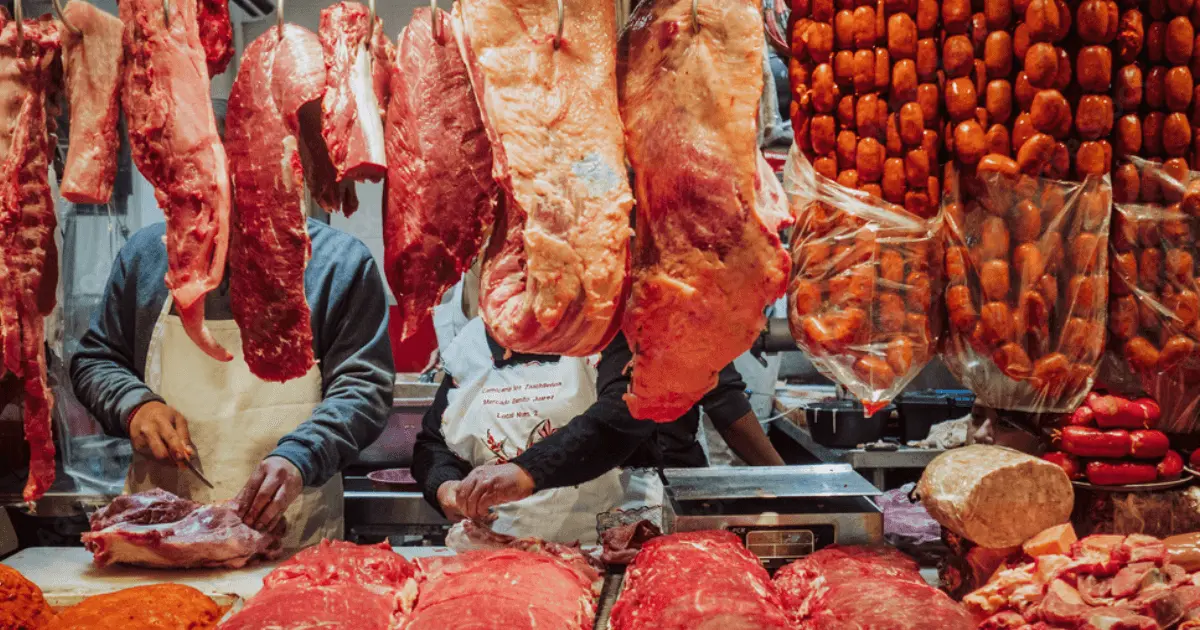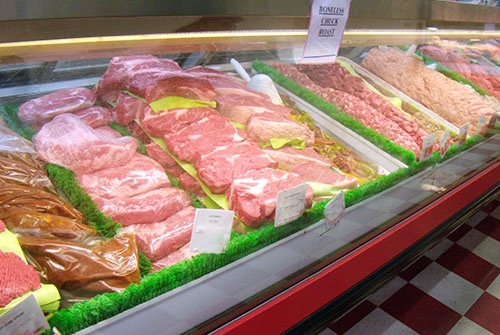Bagley Farms Meat Market Edwardsville IL: Your Best Location for Regional Meat Choice
Bagley Farms Meat Market Edwardsville IL: Your Best Location for Regional Meat Choice
Blog Article
Uncover the Art of the Butcher's Cut in a Modern Meat Market
In the ever-evolving landscape of modern-day meat markets, the butcher's cut has actually transcended its traditional origins, merging old-time craftsmanship with modern methods. What really establishes the contemporary butcher apart is their capacity to create a much deeper connection in between consumers and the origins of their meat.
Evolution of Butchery Methods

The mid-20th century saw butchery techniques better fine-tuned by scientific insights right into muscular tissue biology and meat aging, boosting both tenderness and preference. Innovations like vacuum cleaner packaging and refrigeration extended product shelf-life, enabling butchers to diversify offerings and improve quality control. This duration additionally marked the rise of customized devices, such as band saws and meat slicers, which enhanced accuracy and effectiveness in meat handling.
The 21st century has actually introduced electronic modern technology into the butchery realm. Digital systems now aid in monitoring animal provenance and optimizing cuts to fulfill certain customer choices. Furthermore, a revival in artisanal butchery has arised, mixing standard skills with modern-day understanding to accommodate customers seeking ethical and sustainable meat options. This advancement underscores a vibrant interplay in between tradition and technology, meeting contemporary needs while protecting the craft's heritage.

Understanding Meat Cuts

Understanding the details of meat cuts is crucial for both butchers and consumers seeking high quality and value. For butchers, specific cuts show skill and regard for the craft, guaranteeing minimal waste and ideal yield.
The key classifications of meat cuts consist of primal, sub-primal, and retail cuts. Primitive cuts, such as the loin, rib, and chuck, are the big areas at first divided from the carcass. Butchers then damage these down additionally into sub-primal cuts, before finally creating retail cuts offered to consumers, like ribeye or tenderloin. Each phase requires cautious attention to physiological framework and muscle make-up.
Understanding muscle mass make-up is important; muscular tissues used extra frequently by the animal often tend to be tougher and are best fit for slow-moving cooking methods, while less-used muscle mass, like those located in the loin, are more tender and suitable for cooking or roasting. Familiarity with these distinctions equips customers to make informed choices, improving their cooking undertakings.
Selecting Quality Meat
Picking the appropriate other meat entails more than just selecting a visually appealing item from the screen. The art of selecting top quality meat requires a critical eye and understanding of specific characteristics that signify quality and excellence.
Second of all, think about the marbling, which refers to the white streaks of fat within the muscular tissue. Appropriate marbling is a vital sign of tenderness and taste, as it melts throughout cooking, boosting the meat's juiciness. Remember, greater marbling often associates with exceptional high quality cuts, such as USDA Prime.
Appearance is one more crucial variable; meat needs to really feel solid to the touch, not slimed or overly soft. In addition, be mindful of the aroma. Fresh meat ought to have a clean, neutral scent, devoid of any sour or off-putting smells.
Pairing Cuts With Food Preparation Approaches
Successfully combining cuts of meat with the suitable food preparation approaches is vital for attaining optimal flavor and structure. Various cuts vary in tenderness, marbling, and connective cells content, each needing details techniques to unlock their possibility. For circumstances, tender cuts like filet mignon and ribeye, with their fundamental marbling, gain from high-heat, quick-cooking approaches such as grilling or pan-searing. These approaches enhance the meat's natural flavors and make sure a juicy coating.
Alternatively, harder cuts like brisket and chuck roast are abundant in collagen, which damages down right into jelly when cooked slowly. These cuts are excellent for braising or slow roasting, allowing the meat to soften over time and create deep, intricate tastes. Similarly, cuts such as brief ribs and pork shoulder make out well with slow-cooking methods, where extended cooking times transform their robust appearances right into delicious find out here meals.
Lamb shanks and oxtail, which require prolonged food preparation to soften, are ideal candidates for stewing or slow-moving simmering. These approaches coax out abundant, hearty flavors while keeping moisture. By comprehending the special qualities of each cut, cooks and home chefs alike can raise their culinary productions, making certain each meal is both satisfying and remarkable.
The Butcher's Function Today
Navigating the evolving landscape of the contemporary meat market, the butcher's role today prolongs past simple prep work of cuts. Contemporary butchers are culinary artisans, instructors, and advocates for sustainable practices.
Along with crafting precise cuts, butchers currently involve directly with clients, offering cooking guidance and customizing selections to match individual requirements and choices. Their expertise in meat aging, marbling, and flavor accounts encourages consumers to make educated choices, boosting their cooking experiences. This individualized service exhibits the butcher's developing function as a relied on expert in the kitchen.
Furthermore, butchers are essential in minimizing waste, making use of whole animals to produce varied items such as sausages and supplies - bagley farms meat market edwardsville il. This thorough approach not only respects the animal yet also aligns with contemporary sustainability objectives. In this method, the contemporary butcher personifies both tradition and innovation, adapting to an ever-changing market while maintaining the virtuosity and honesty of their craft

Conclusion
The modern butcher's craft elaborately weaves conventional techniques with modern-day advancements, emphasizing lasting Click This Link methods and moral sourcing. Mastery in understanding varied meat cuts and high quality indicators encourages butchers to supply informed referrals, aligning details cuts with ideal cooking techniques. This competence not only elevates cooking experiences but additionally strengthens the link between customers and the origins of their food. By recognizing historical techniques while embracing modern needs, the butcher's role stays crucial in today's sophisticated meat market.
Report this page